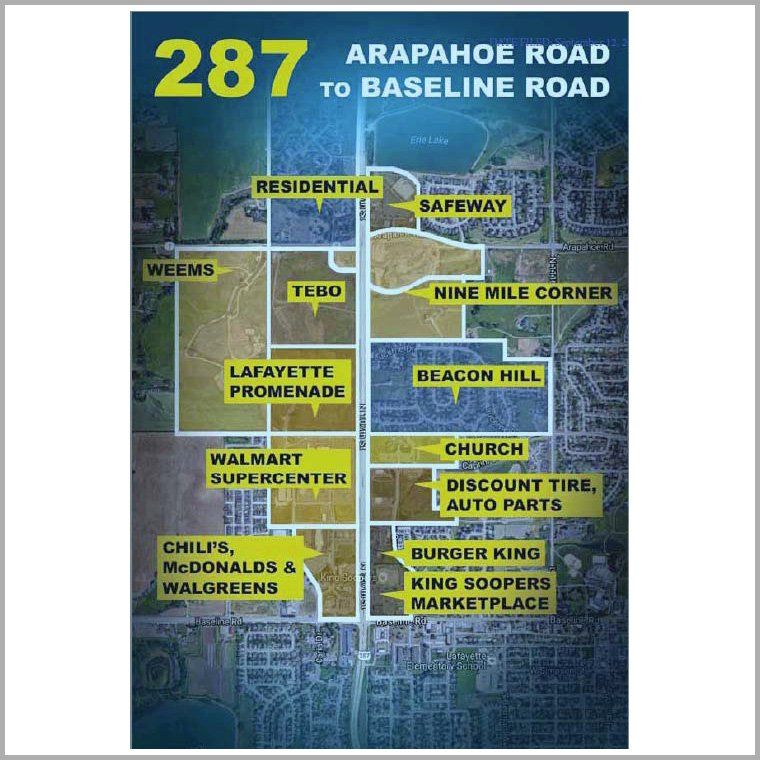IGA's and Local Governments: Erie's Relationships and Negotiations (Including the Nine Mile Agreement)
Andrew Sawusch • February 22, 2020
This post addresses what an Intergovernmental Agreement is, the relationships that Erie has with other agencies through the years, the Nine Mile agreement, and why this agreement can be considered a loss due to poor negotiating

Be sure to stop by during my first meet and greet this weekend - Sunday, February 23, 2020 from 1:00 - 2:00 pm at the Erie Community Center, Lehigh Room (450 Powers St, Erie, CO 80516). More information is available here.
An Intergovernmental Agreements (IGA) is a great tool when used properly. IGA's provide a clearly defined relationship between two or more agencies, specifically addressing a certain topic or a range of topics, and creating a legally bound "contract" between the parties. Erie has entered into many of these IGA's over the years for various reasons. However, typically these IGA's have been brought to Erie, instead of Erie bringing them to other agencies. And except for a handful of "major" or "large-scale" IGA's with larger entities, they have been either with a metro district, or on "small-scale" issue items.
One IGA in particular, that has ruffled a few feathers recently with members of the community- the "Global IGA" settlement agreement between Lafayette and Erie - was created to "bridge the divide" between the municipalities, and ensure that there was cooperation for the future. This agreement came about after more than 6 months of negotiations, resulting in a signed IGA on June 4, 2019. The agreement, while largely started due to the Nine Mile development litigation, cascaded into one that included items such as the "Parkdale" development, the "Tebo Project", the Lafayette wastewater facility expansion, and improvements to the intersections of both 119th/Hwy-7 and County Line/Hwy-7.
Personally, I understand why this agreement was eventually signed. It ended the lengthy legal battles with Lafayette, and worked to begin to build a new relationship for the future. With that said, what I do not understand is why we initially started negotiations with Lafayette in the first place, since there were never any publicly stated intentions to do so by the Board. The only item that I can find is a Board of Trustees executive session behind closed doors, where the board discussed an item
which was regarding ongoing litigation. Nor do I understand how the agreement did not result in an outright "win" for Erie, since we had the upper hand, had won their legal battles, had proposed a new agreement with additional items for Erie - which were accepted. For some reason, there continued to be negotiations, where additional concessions were provided along the way, which only provided additional items to Lafayette.
For years, the Town has not fully attempted to resolve contentions with municipalities, but have instead used litigation to resolve them. The most recent battle with Lafayette all started with an IGA, and then ended with another IGA. At first, you would have thought, "wonderful, the Town of Erie is taking the first step to resolve things, instead of being the ones who are approached by another agency." But based on the timelines seen, the actions taken, and the differences between the executed IGA and the IGA which was approved by both the Town of Erie's Board of Trustees and Lafayette's City Council - the current Board and Town leaders do not know how to negotiate.
This is ultimately one of the many reasons why I am running for Trustee. Our Town needs
the leadership that our residents deserve. Our Town needs a leader from the business world who understands negotiations and who understands the power of relationships. The current Board has not provided Erie's residents with the due-justice which we deserve. This can be seen through their actions, and it is especially shown through the Lafayette/Erie IGA, where they were willing to "sell the farm" in order to get one or two additional small-ticket items.
What is an IGA
An Intergovernmental Agreement (IGA) is a legal "contract" between two or more agencies where the parties have "overlapping", "adjoining", or mutual jurisdiction. IGA's can be made between any two more more agencies, whether it be between a State government, a County, a local municipality, a school district, a metro district, an agency of the state - basically any "agency" that has some form of a "jurisdictional power". The reasons for entering an IGA can be as simple as a mailbox for depositing election ballots, to as broad as a county-wide comprehensive plan. Among other reasons, IGA's can be drafted to determine water rights, provide security, decide water rights, provide election support, or even to determine jurisdictional power.
Erie has entered IGA's for decades with countless agencies, for many different reasons. It is possible that, if you who are reading this is a resident of Erie, the subdivision which you live in originally had an IGA formed between the Town and your metro district. Regardless if you are a resident of Boulder County or Weld County, Erie has also signed many IGA's with both of those counties as well. Whether IGA was an environmental sustainability matching grant program, the collection of Boulder County use taxes, an easement granted to BVSD between Star Meadows Park and Meadowlark PK-8, or the CDOT improvements on Hwy-7 with upwards of a dozen municipalities - each of these various agreements came to be because multiple agencies had jurisdictional power or "influence" over the area, in addition to Erie's own.
Erie's Relationships with Other Municipalities and Agencies
For decades, Erie has been viewed as if they were the youngest child out of a dozen siblings. The Town has been picked on, beaten up, and taken advantage of for years by other agencies and municipalities. Time and time again, Boulder County has had to intervene in the Town's relationships, setting rules and restrictions for the Town through IGA's, basically placing Erie in "timeout." On the other side of County Line, although Weld County has shown support for the Town, in recent years they have been taking a step back from Erie due to the Town's indecisiveness, or due to the actions taken by current and previous boards.
In terms of the local municipalities, Erie has taken a backseat to their interests. Whether that was Broomfield, Lafayette, Dacono, or Frederick, there have been many legal battles, failed negotiations, or simply refusal by the other municipalities to even come to the table for discussions. Being stuck in the middle of these other jurisdictions, Erie has continuously "acted small", therefore has been treated without the respect required for the Town. This has then cascaded up to State agencies, where they have sided with other municipalities because basically "they were there first" or because they "made a claim first."
The Frederick - Boulder County IGA
In terms of IGA's, on one hand, they can become a point of contention for municipalities. In 2008, Frederick and Boulder County signed the "Frederick Boulder Creek Planning Area Comprehensive Development Plan Intergovernmental Agreement." This IGA was intended
to maintain a rural open space "buffer" along the Boulder Creek, just over the Boulder County line into Weld County. While this agreement was signed in 2008, it expired in 2018 due to Erie never developing an IGA with Frederick to supplement and agree to this one. The reason? Because this area was also contentious between Frederick and Erie, since Frederick annexed the "Yardley Wetlands" in January of 2007. Erie made a competing claim to the land, which then ensued in a legal battle, which Erie lost. (inadvertently, this 10 year mark was around the same time that Boulder County requested that FEMA readdress the flood maps related to Boulder Creek, which has effected a swath of land within Erie - both unincorporated and in the Town boundaries - to now being deemed in a flood way).
The First Lafayette-Erie IGA
On the other hand, IGA's can also be used to defuse tensions. In 1994, Lafayette and Erie signed the "East Central Boulder County Comprehensive Development Plan Intergovernmental Agreement" with Boulder County acting as the intermediary. This IGA was formed
due to various legal battles that were occurring - similar to the Nine Mile litigation - between Lafayette and Erie, in addition to each municipality with Boulder County themselves. Basically, each municipality was looking to annex various plats of land, each municipality was looking to develop rural areas, and each indicated that they had a competing claim and right to these specific areas. So, "in the best interest of the citizens of each of the parties", Boulder County stepped in with the intention to "preclude increased development and urban sprawl which would obliterate the boundaries of Lafayette and Erie." This meant that both Lafayette and Erie had to drop any legal challenges to various tracts of land - including Erie's challenge to annexing the area of Leyner. What it did was quell tensions, and for a decade there continued to be peace.
The Boulder County Super IGA
In 2003, Boulder County again acted as the intermediary during the "Boulder County Countywide Coordinated Comprehensive Development Plan Intergovernmental Agreement", also known as the "Super IGA". Almost every municipality in Boulder County was a signing member of this agreement, including every major municipality within the County (Longmont, Superior, Nederland, Boulder, Lafayette, Erie, etc.). The idea behind this agreement was that it "specifically authorizes local governments to cooperate and contract with each other for the purpose of planning and regulating the development of land". This was done in order to supplement the already existing IGA's made by various municipalities and jurisdictional entities, as well as include unincorporated areas not covered by an IGA. Just like the '94 Lafayette-Erie agreement, it was "intended to preclude increased development and urban sprawl which would obliterate the boundaries" of the signatory municipalities. Essentially, it was designed to maintain open space and rural areas so that they did not become developed upon, and to limit the competing claims made by specific municipalities. Again, what it did was quell tensions, and for another decade there continued to be peace.
Erie and Lafayette Leave the Super IGA and East Central Boulder IGA
The East Central Boulder IGA had a term of 20 years, expiring at the end of 2014. As well, within the Boulder County Super IGA, there was a stipulation where up until 90 days of the agreements tenth anniversary, any municipality could provide written notice that they would be removing themselves from the IGA. Both Lafayette and Erie decided to exercise this right and exited both agreements. Specifically for Erie, this was in part due to the interference that Boulder County had within matters of Erie's "area of influence", and also in part due to Erie's need to continue expanding and growing. From there, the competing claims and lawsuits once again began - largely all related to land surrounding the stretch of US-287 near Arapahoe Road.
Since the "Tebo" property and the "Stonehenge" subdivision are both in unincorporated Boulder County, each municipality wanted to make their claim to them, similar to the way that events were occuring back in '94. Erie however, also had its sights on using the former reservoir at the Southeast corner of Arapahoe and US-287 for something better. They initially claimed blight on the land, and then moved to "revitalize" it for commercial development.
Lafayette saw this as an intrusion to their "influence area", so approached Erie about purchasing the land. When Erie rebuffed their offer, Lafayette made a play to lay claim to the area
through annexing it into their City. So to do this, and in order to get what they wanted, Lafayette did the only thing that they could - they sued Erie.
They brought a claim for the rights to the Nine Mile area on the basis of "using the land as open space to act as a buffer between the two communities", similar to the intentions laid out in the previous Super IGA and the East Boulder County IGA. The Boulder County court case was dismissed, so they moved it up to the Colorado Court of Appeals, who also denied the claim, and when that didn't work, they moved it up to the Colorado Supreme Court, who refused to hear the case. In the end, the courts ruled that it was all about development - specifically about Lafayette potentially losing sales tax revenues because King Soopers intended to move locations to the Nine Mile development. They noted that the litigation was not about the "open space buffer" as they claimed, so sided with Erie.
Also while this was going on, there were rumors that the Tebo property across US-287 had intentions of annexing into Erie. In this situation, Erie did something smart. They negotiated the rights to the oil well
smack dab in the middle of the Tebo property, purchasing both the land and mineral rights. It was an old well that didn't produce much oil, but it basically acted as Erie planting its flag in the land for future use, as if to say "mine!"
The First Lafayette-Erie IGA
In December of 2018, after the ruling by the Colorado Court of Appeals in Erie's favor, and before the petition for writ of certiorari was denied by the Colorado Supreme Court, for some reason, Erie reached out to Lafayette. Erie's new Town Attorney contacted Lafayette's City Administrator to talk about the various points of conflict between the two towns. The Lafayette City Attorney sat down with Erie's Interim Town Administrator and Town Attorney for a period of 2 months to create a potential global settlement dealing with the issues between the two municipalities. They drafted a potential global IGA that they thought addressed all of the points of conflict, an agreement which met the needs of both communities.
The first IGA was not great, but it still could be considered a "win" for Erie. The agreement included a 250 easement buffer, a retaining wall - if necessary - no less than 45 feet to the southern boundary of the easement, a paved drive that could extend no more than 100 feet into the easement from the north, a 60/40 tax revenue split for the Tebo property when Lafayette eventually developed the land (Erie receives 40%), created an "influence area" boundary between the two municipalities, provided attorney's fees of $440,000 to Erie from Lafayette essentially as payment for the easement, plus a few additional items. Most importantly, it did not
include a tax split of the Nine Mile property.
The Second Lafayette-Erie IGA
In the January 22, 2019 Town of Erie Board of Trustees Meeting, a resolution was proposed regarding the first IGA with Lafayette. When the resolution came up on the agenda, the Board went into an executive session for 1 hour and 28 minutes regarding the IGA. When they came back, the Town Attorney said that there were modifications made, and issued the revised IGA.
The modifications included adding provisions for a water storage tank on the Tebo property - not on the Nine Mile site, removed wording that said Erie had to relinquish its mineral rights from the well on the Tebo property, added that Erie would have final approval of the Tebo site development, as well as added a provision that said Lafayette "will not unreasonably withhold approval for access permits related to improvements to the intersection at State Highway 287 and Arapahoe Road." Basically, the board tried to throw in everything that they could think of at that moment, in an attempt to ask for more concessions from Lafayette for the lengthy legal battle that had transpired.
During the public comment portion, the managing partner for the Nine Mile developer pointed out some concerns to the Board, which could impact the property's future development. These included tenant concerns, easement and encroachment concerns, as well as concerns of attracting the tenants required. The developer said that they would prefer to delay the project further in a short-term nature if it allowed for these additional concerns to be addressed.
A motion to move deliberations of the IGA to a later date was rejected and failed (vote: 2-4). Instead, the board then motioned for a vote and approved the resolution (vote: 4-2).
Then, that very same night after the Board of Trustees meeting, the Town of Erie Urban Renewal Authority Board (TOEURA) met, which also includes the same members on the Board of Trustees, plus a few additional non-Board of Trustees members. Since the litigation was between Lafayette and both the Town of Erie and TOEURA since TOEURA owns a portion of the land at Nine Mile, there was once again a resolution on the TOEURA agenda for the same IGA. Once again, the TOEURA board went into an executive session for 58 minutes regarding the IGA with Lafayette. When they came back, they moved to continue talks regarding the resolution at a later date and not vote upon the resolution (vote: 7-1).
At the Lafayette City Council meeting on February 6th, the council was supportive of this revised and proposed IGA, looking to end the animosity, and to work together. The council wanted to be able to work with Erie to "take back the power" held by developers. The council passed the resolution to approve the IGA unanimously.
Then the Colorado Supreme Court came back on February 11, 2019, saying that they would not hear the case, again judging in Erie's favor. This is where Erie then started to squeeze Lafayette, ultimately losing their control of the situation.
The Third Lafayette-Erie IGA
At the TOEURA February 12, 2019 meeting, once again there was an agenda item for the IGA. The TOEURA went into an executive session for 1 hour and 10 minutes regarding the IGA with Lafayette, then came back after, deciding to again table discussions until a later date (vote: unanimous).
This also happened during the Board of Trustees meeting later that night. The board went into an executive session for 47 minutes to discuss litigation of Nine Mile. When they returned, the meeting was adjourned.
It then also occurred in this same fashion in almost every meeting after. In total, there were 8 hours and 33 minutes of "behind closed doors" executive session discussions relating to the IGA.
- March 12th: TOEURA meeting (1 hour and 2 minute executive session, followed by adjournment)
- March 26th: Board of Trustees meeting (a motion passed to move the discussion of the IGA to a later date, voted 4-1)
- April 9th: Board of Trustees meeting (1 hour and 31 minute executive session, discussing "water rights" related to the IGA, followed by a resolution to add this to the IGA, followed by adjournment)
- April 23rd: TOEURA meeting (33 minute executive session to discuss the IGA, followed by adjournment)
At the May 28th Board of Trustees meeting, the board went into an executive session for 25 minutes to discuss the IGA with Lafayette, came back out, and discussed a resolution related to the IGA. They then passed a motion to accept this IGA (vote: 5-2).
At the June 4th TOEURA meeting, the committee went into an executive session for 39 minutes regarding the IGA and one additional item. When they returned, a vote was accepted to approve and execute the 3rd and final IGA
(vote: 8-1).
What the 3rd and Final IGA included
The final IGA that was executed by both Erie and Lafayette had many changes from the first and second agreements. There were items added on both sides, largely by Lafayette, changes in the "areas of influence" which gave Lafayette much more land, the easement buffer was changed from 250 ft to 150 ft, the "paved road" that could encroach into the easement was removed from the agreement completely, the retaining wall was pushed out 35 feet to the north - which both of these items essentially reduced the amount of land initially provided in the first agreement by a mere 20 feet to 230 ft - as well as attempted to address many additional items of contention. The final IGA which was executed included the following terms:
Annexation Provissions
Influence Areas
- Any annexation or servicing of water, sewer, etc. will be made by the municipality that has influence over the area
- Sets rules of future "annexations" into either Erie or Lafayette
- Erie received the north-side of Arapahoe to the East of Hwy-287, the "Nine Mile" area, and the "Stonehenge" subdivision NW corner of Arapahoe and Hwy-287 (unincorporated Boulder County, currently Lafayette address)
- Lafayette received influence over the south-side of Arapahoe to the East of Hwy-287, a portion at the Northwest corner and the triangular plat of land at the Northeast corner of County Line and Hwy-7 - from County Line to the Boulder/Weld county border - where Lafayette's solar panel array is currently located and where they plan to expand their Water Reclamation Plant, and also received Town of Erie property - "Price Lake No 1" - at the Southwest corner of Arapahoe and Hwy-287
Future Annexations
- Any application or proposal for annexation or development of any parcel within 2,500 feet of the Erie or Lafayette Influence Areas will be reviewed by both municipalities.
- No annexation or development will take place until both municipalities have had time to review the proposal, and any responses must be received within 21 days.
Nine Mile Parcel Provissions
Full and Final Settlement of Litigation
- The agreement looks to settle all judicial proceedings once and for all. Within 30 days of execution, both parties will move for dismissal of the case
- Both parties agreed to dismissal "with prejudice", each party being responsible for its respective costs and attorney fees (except for Erie's, which is provided as payment for the conservation easement)
Grant of Conservation Easement
- 150 feet on southernmost end of Nine Mile project granted to Lafayette for the purposes of a "buffer" between Lafayette residential properties and Nine Mile development
- A retaining wall 8 feet high must be built no closer than 80 feet from easement (if necessary)
- The easement must include trees, shrubs, and native grass - at least one tree per 600 square feet, one shrub per 90 square feet. The developer of Nine Mile or its successors are responsible for the maintenance of the easement area
- Once the easement has been delivered, Lafayette will pay TOEURA $476,500 for attorney fees and costs associated with legal proceedings
Tax Revenue Sharing
- From the first day that a certificate of occupancy is issued by Erie, Lafayette will receive a 50/50 tax split of any sales, use, lodging, admissions, amusement, excise, and any other sales or activity based taxes
- Because Lafayette has 0.5% sales tax amount that is "restricted" from sharing, of Erie's 3.5% sales tax rate, 0.5% (ie. 1/7th) of Erie's tax rate will also be considered "restricted" from sharing. In total, of Erie's 3.5% sales tax rate, 1.5% will go to Lafayette, and 2.0% will go to Erie
- Any future increases to Erie's sales tax rate will still result in the tax rate, less 0.5%, and a 50/50 split of the remainder
- If there are any "economic development incentives" granted to owners or developers, this will be deducted from the "net unrestricted" tax rate before the 0.5% restricted and 50/50 split. Any additional "incentives" provided (including any contributions of real property), will be shared in the same 50/50 manner
- Any expenses incurred previously or in the future, including infrastructure, will be shared 50/50. Any expenses previously or in the future paid by TOEURA or Erie, will be deducted from Lafayette's share of sales taxes
- Erie must report sales tax receipts to Lafayette within 60 days of the last quarterly sales tax reporting period of the year
Tebo Property
Tax Revenue Sharing
- Exactly like Nine Mile revenue sharing, 3.5% lafayette sales tax rate, split after the 0.5% "restricted for purchase and maintenance of open space" is removed. The remaining 3.0% is split 50/50 between Lafayette and Erie
- Any future sales tax increases will still be split 50/50
- Any "economic development incentives" will be removed prior to "net unrestricted" 3.0% tax rate to be shared
- Lafayette must consult with Erie prior to entering an economic incentive agreement related to Tebo property
- Any additional development expenses, including infrastructure, will be split 50/50, and deducted from Erie's share
- Lafayette must report sales tax receipts to Erie within 60 days of the last quarterly sales tax reporting period of the year
Water Storage Facility
- Lafayette and Erie will work together to find a location for an above-ground water storage facility (fire flow, emergency water storage, drinking water supply for Erie water customers), but Lafayette will not incur any costs to assist Erie in the acquisition or construction
- The water storage facility will not be located on Nine Mile, but may be located on or near the Tebo property, and within Lafayette City boundaries. If the facility is located on Tebo property, it will be negotiated by Erie and the owner of the property
Oil and Gas Wells
- Erie must close and permanently abandon the oil and gas well on the Tebo property
- Within 7 days of the Tebo property being annexed into Lafayette, this closure and abandonment must begin
- This is contingent upon Erie receiving 3/4 access from Hwy-287 into Nine Mile
Economic Development Cooperation
Commitment to Cooperation
- Erie and Lafayette will work together to foster development of both the Tebo property and Nine Mile
- Erie will not offer economic incentives to find a 2nd anchor tenant for Nine Mile until Lafayette has acquired one on the Tebo property
State Highway 287 Access
- Erie will apply to DCOT for a 3/4 intersection permit into Nine Mile from Hwy-287, Lafayette agrees to support the petition for the permit
- To support Erie, Lafayette agrees to amend any existing IGAs with CDOT and/or Boulder County, and State Highway 287 Access Control Plan
State Highway 7 Access - 119th / Parkdale / County Line Road
- If Erie issues a permit for a "full motion" intersection for the Parkdale development, Lafayette will approve the permit
- If a new intersection is approved, Lafayette will still have access to their property at the NE corner of County Line and Hwy-7 for their wastewater facility
- Any improvements to County Line and Hwy-7 will be at Erie's expense, excluding improvements required for Lafayette's wastewater plant, which will be at Lafayette's cost
- Erie will be responsible for 25% of the total costs for the improvements to the intersection of North 119th and Hwy-7 (total project cost estimated between $10-12 million)
Lafayette Water Reclamation Plant
- Erie will not provide unreasonable objections to the expansion
- Lafayette will provide odor control equipment for the plant expansion, and install visual screening of the water plant at least 6 feet in height
- Erie will retain any existing water rights
Lafayette Re-use Main
- Erie will cooperate with Lafayette in their current re-use main traversing the future Parkdale development, extending to Lafayette's Goose Haven Reservoir, but Erie will not incur any expenses with the design or construction
Disconnection/Annexation of County Line Road
- The triangular portion North of Hwy-7, between County Line Road and the Boulder/Weld county line is currently within Erie jurisdiction
- This area will be disconnected from Erie, and annexed into Lafayette
General Items
Controlling Regulations / Term and Effective Date
- Nothing in this agreement shall limit Erie's nor Lafayette's authority over land use decisions
- Remains in effect for 10 years, may be terminated if any part of the agreement is unenforceable
- The agreement automatically renews for an additional 10 years, unless between 90-180 days before end of term, either party decides to not-renew
What Happened to Get to this IGA
In the end, Erie's board majority became to greedy. They started asking for more and more concessions, which in turn emboldened Lafayette. Instead of taking the "win" as it was at the beginning of February, Erie continued to add additional items, dragged their feet in signing the agreement, resulting in what many could see as a "loss."
You may ask, "what did the Lafayette City Council do during this entire time?" After the February 6th meeting, there were almost no conversations regarding the item at the City Council meetings. They had had an executive session for 59 minutes on April 2nd, and then on June 4th brought the IGA up for a vote. During the meeting, the City Attorney made this comment:
"What is proposed is a 50/50 tax sharing revenue. This is a bold proposition, but what it does is it reduces competition and reduces the requirement to provide incentives. In essence, a 50/50... sharing creates a level playing field... It also drives a higher and better use for both communities within both of the areas, we feel. And will work to attract a diversified portfolio of developers and revenue generators. The 50/50 sharing was really a game changer during discussions with our respective communities, which really I think, got us to where we are today with favorable consideration, hopefully, of this agreement."
The City Attorney went on to say that two items within the agreement - Erie's abandonment of the oil well on the Tebo property, and the 3/4 turn access from US-287 for Nine Mile - were "particularly important in order to make sure that these two areas developed as needed. That really opens up a lot of doors." What this means is that as the conversations progressed, Lafayette used Erie's petition for access from US-287 into Nine Mile as a bargaining chip. While they are the "issuing party" for access permits, the first agreement that was accepted by Lafayette's City Council already indicated "Lafayette is prepared to formally intervene in the administrative proceedings" and that they would "not unreasonably withhold approval for access permits related to improvements to the intersection at State Highway 287 and Arapahoe Road", while also including provisions related to the access point for the Parkdale development. But again, since Erie started to ask for too much, in order for Lafayette to grant the permit, as well as to advocate to CDOT on Erie's behalf, they required that Erie abandon and cap the current oil well, which was in essence asking Erie to remove the flag that they planted in the middle of the Tebo property.
As the City Attorney then continued on, the water supply was noted, although this item was already included in the first agreement. They also then said that because the Colorado Supreme Court had refused to hear the case, the buffer easement was not going to happen initially, but it was negotiated as an inclusion into the IGA, in exchange for payment of the attorney fees provided of $476,500.
You might now ask, "how much is the land actually worth?" since it was never provided in any of the Town of Erie meetings, as Town staff did not know the answer since they had not looked into it. Based on the Boulder County Assessors "Actual Value", a 150 foot easement buffer along the approximately 1373 foot southernmost line of the Nine Mile development is worth approximately $215,696.98 (including land and structure), and $164,089.24 for just the land alone. When you add in the 8 foot tall retaining wall no closer than 80 feet away from the easement that now does not include a potential paved driveway, essentially creating a buffer of 230 feet, this land is worth approximately $330,735.36 (including land and structure), and $251,603.51 for just the land alone.
While Erie still technically owns the land, this means that Lafayette basically paid this amount for the easement buffer - which would have never been provided if this IGA wasn't negotiated - and Lafayette reimbursed Erie for attorney fees in the amount of $145,764.64 (land and structure) or $224,896.49 (land only). These amounts are below the $250,000 that Erie had originally petitioned to the courts for Lafayette to reimburse due to attorney fees, in addition to the additional fees which Erie could have
also requested at a later date.
Finally, the City Attorney acknowledged that Erie agreed to support Lafayette's 2020 expansion efforts of their wastewater facility at the northeast corner of County Line and CO-7, which was originally within Erie's influence area.
Conclusion
In the end, the IGA first accepted started as a "win" for Erie, but over time, became what can be viewed as a "loss." Both the Lafayette City Council and the Erie Board of Trustees approved the revised agreement (noted earlier as the 2nd IGA). But then when items were pointed out which could potentially negatively effect Erie, the board majority kept asking for more, and then asking for more, and then continued to a point where they just basically threw their hands up and gave in to Lafayette. If you watch the June 4th Board of Trustees meeting, the board majority basically gave up. They did not want to negotiate anymore.
For any and all of Erie's future IGA's, it is important that negotiations must be completed so that they continue to benefit the Town's residents - not so that many concessions are made in order to add one or two additional items. In the case of the Lafayette/Erie global IGA, this is exactly what happened. I do not believe the Board majority understands how negotiations work, nor do I believe that the Board majority is capable of making negotiations properly. Yes, they did create a document which works to end the battles with Lafayette that extended many years - I will give them that. But as you see how the progression of this IGA went on, it is obvious to tell that it ended up being a "loss" for Erie. They let Lafayette once again take advantage of them, and it ended with an IGA which gave away too much at the cost of Erie residents.
Erie must do a better job of restoring relationships with other local jurisdictions - including local agencies, municipalities, and counties. We are currently on a path with some municipalities where they will not even come to the table anymore because of the actions taken by our current and previous boards. We have had to end up litigating many disagreements which should have been properly negotiated in the first place. This has resulted in legal costs of approximately $2,000,000 since 2018, including the expenses appropriated within the 2020 Town budget.
This is one of the many reasons I am running for Trustee. Erie needs a leader who is from the business world. A leader who has been part of negotiations before and who understands that negotiations, especially when started by the party who has "the power" or upper hand in the first place. Yes, there should be some concessions provided - this is what a negotiation is - but they should always end up in where the party who has the legal power backing them to be the prevailing party at the end. In negotiations, if you create an agreement, add additional items to it, and it is accepted, you should accept the agreement, then later add amendments if necessary. What the current board did was started in a position of strength, and then worked backwards - instead of the other way around.
Thank you for taking the time to read this article! If you like the topics and stances that I have been discussing, please be sure to support my campaign for trustee by getting involved in a few different ways (click here to see the ways to contribute)!
*Just a side note to all of the items that I discuss: I am a solutions driven problem solver by nature. I wonder how things work, why they work the way they do, and how to make them better. This means seeking different, outside-the-box methods to figure out solutions to various issues. Accordingly, I am always open to learning new ideas, different ways of doing things, as well as constantly learning from others' experiences to make better decisions. When I see an issue, I view it in a holistic fashion, and then dive into specific areas to remove deficiencies and create efficiencies. If you, who are reading this, have some thoughts or ideas about any of the subjects I discuss, I would be more than happy to speak with you to hear your opinions. Please reach out to me here through my website. Listening, hearing, and understanding different perspectives is the only way that we can all grow and create positive change - by learning from others, and delivering ideas that push the needle to become Forward Thinking.
Share
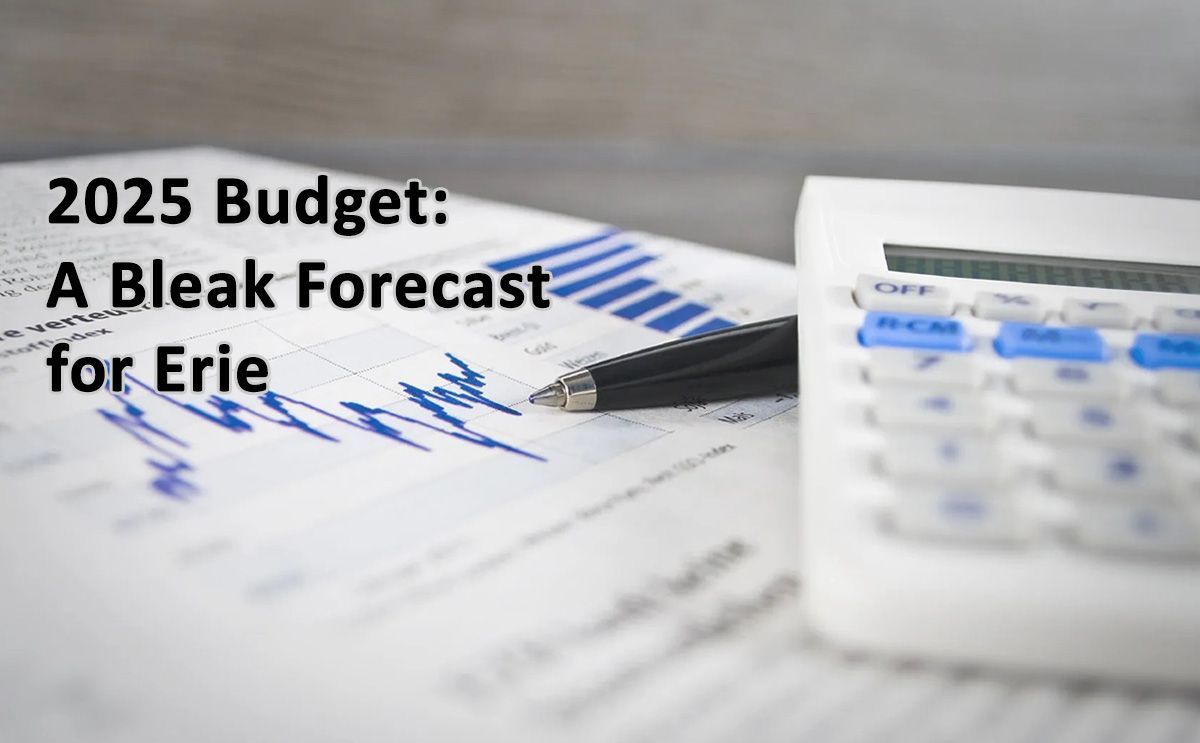
Projected to be depleted by 2027, Erie's finance team forecasts the Town's Capital Fund to only have $2.5million available for capital projects (after $4million Street Maintenance) from 2027 through 2029 — due to overspending caused by operational and capital expenses exceeding the growth of revenues
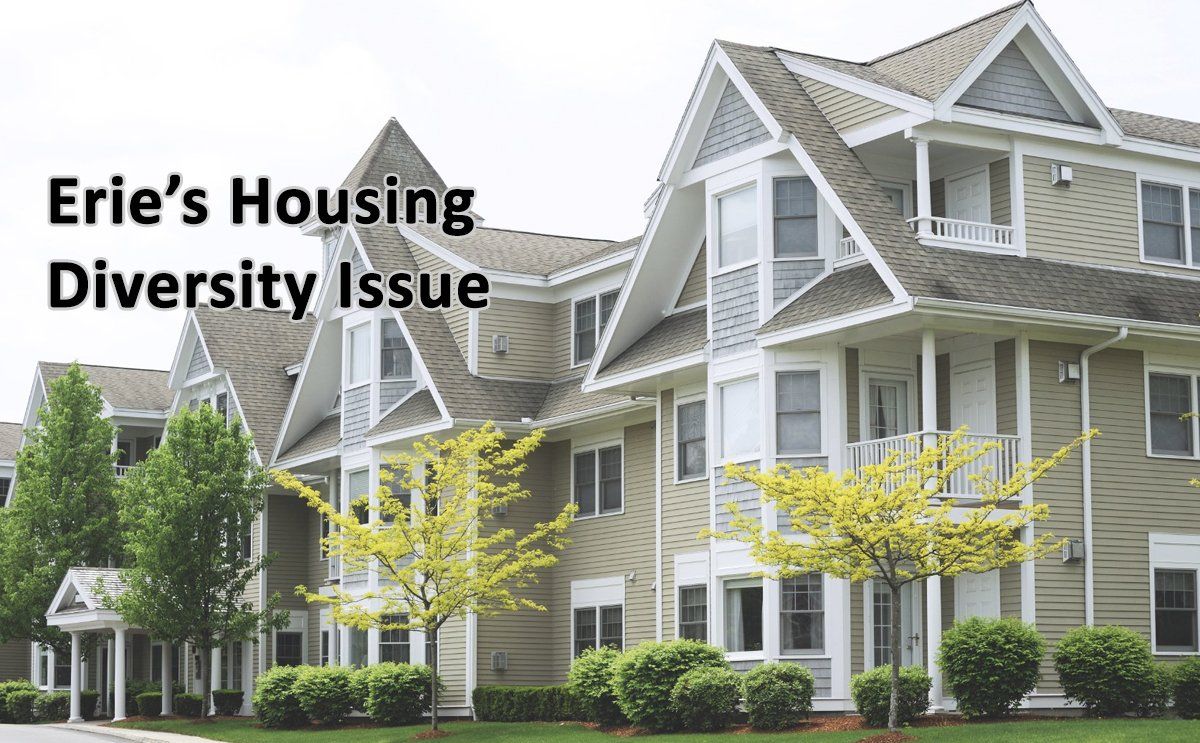
While some call it an "Affordable Housing" issue, in reality the root of the problem is a lack of housing diversity. During the Town's massive growth over the years, a lack of available inventory and the national housing market have created a housing affordability issue as the Town's makeup has comprised almost entirely of single family homes. The best way to resolve this issue is to work with our stakeholders in the community - our development partners - to address the cause, not the symptoms of the issue.

Erie has quickly moved from "the best kept secret" to "the gem of North Metro Denver", becoming a destination that others want to call home. In order to set our Town up for the best chances for success, a plan must be created that provides us with an ability to manage our current and future growth.
The blueprint below is designed to do just that, providing an understanding of where we are now (our "Current Position"), where we are going (our "Upcoming Needs"), and where we want to be (our "Future Growth"). It starts with assessing what's needed at this moment, preparing for what's needed later, and then having a vision to plan for the future.
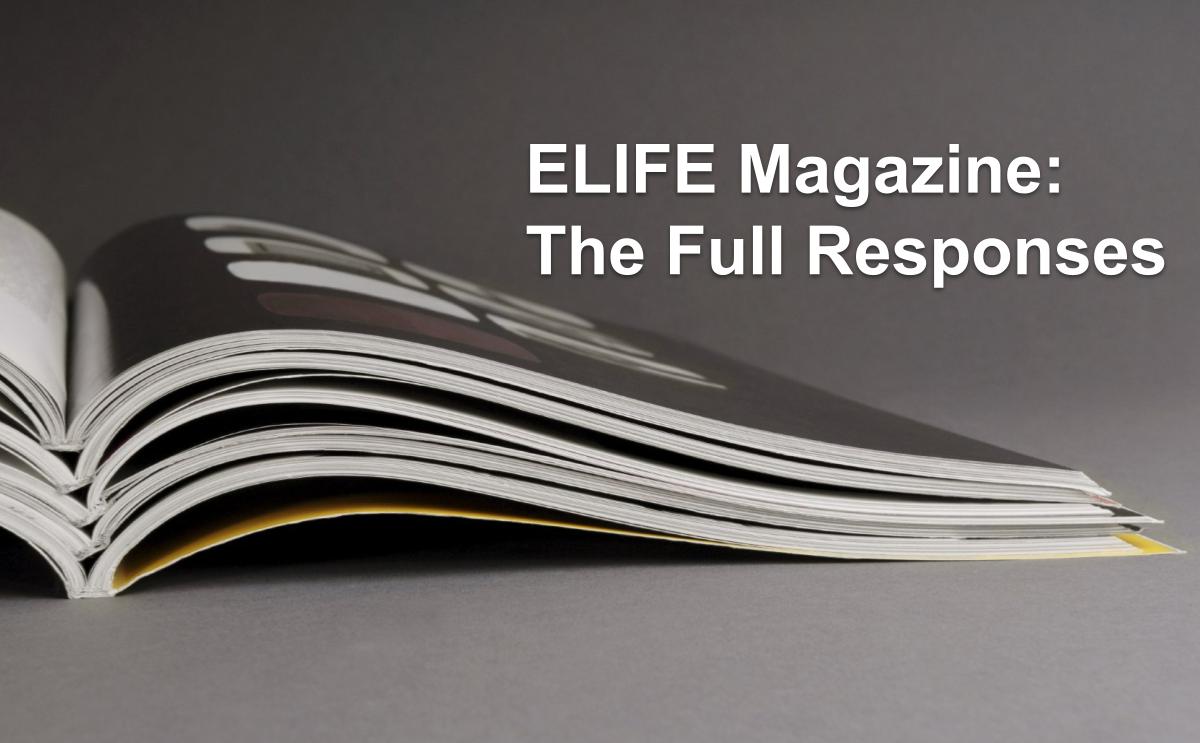
Tell us briefly about yourself and where you are from and why you think you're a good candidate for the position you are running for: Originally from the Chicagoland area, I have been a resident of Erie since 2016, previously a resident of Broomfield for 7 years. I graduated from CU Boulder in 2009, with a Bachelor of Science degree in Business Administration with dual concentrations in Management and Marketing. I am a business operations and marketing professional, with experience growing businesses from the ground up. Currently, I serve as the Sr. Manager of Customer Operations for a data analytics software company. As a solutions-driven individual, I use a holistic-view approach to identify and resolve issues that deliver results, which are both effective and efficient. I am married to my amazing wife, Gabrielle, and am the doting father of my two husky fur-babies, Kaia and Koda. I currently serve as both a Planning Commissioner and a Comprehensive Plan Amendment Steering Committee member for the Town. As an individual from the business world, I believe the Town needs leaders who can create solutions that will be positive and Forward Thinking for Erie’s Future. I believe that I am a good candidate for the position of Trustee because I am committed to making Erie the thriving and sought-after place to live, work, and raise a family - the place we love to call "home"!

I have recently been asked my stance on the Town's current face coverings order. This is an issue which by now, I am sure we have all formed our own personal opinions on. Since 2020, it has affected our daily lives and has been a “hot topic” locally, nationally, and world-wide. It has created division between families, friends, neighbors, communities, and nations alike – and likewise, Erie too has also seen its fair-share of division surrounding the subject. Personally, I abide by the orders issued by a county’s Public Health Agency, as their respective agency has final-say on the specific orders currently in place within their respective boundaries. As well, I abide by the requests and policies of a business which may not be under a mask mandate, but request that patrons within their establishment wear one. However, as I will go into further, the current Town of Erie Face Covering order is in actuality an overreach of legal authority applied to the Weld County side - due to Erie not having its own Public Health Agency, and due to Public Health order which was referenced in the Town's order being from the Boulder County Health Department. The decision made by the Board of Trustees and Town Administrator to administer this upon those in Weld County has not only hurt our businesses, but it has as well placed our Erie Police Department in a situation which they have no option but to enforce the order. The Erie Face Coverings Mandate Erie is uniquely situated in a location where we are split between two counties, with each county having differing views when it comes to various topics – and COVID has been no different. Statutorily, CRS §31-15-103 notes that the Town has the power to issue ordinances “which are necessary and proper to provide for the safety, preserve the health” of the Town’s residents. As well, we are statutorily provided with the authority to create our own Board of Health, as described in CRS §31-15-201 (1) (c), as well additionally in CRS §25-1-507 which notes:

First off, this issue has nothing to do with the capabilities of our Town's current Finance team. I am in no way, shape, or form "throwing them under the bus." I think they are doing a fabulous job, and are making amazing strides in rectifying many issues that they ultimately inherited. These issues should have been found out sooner, and lies entirely and squarely on the shoulders of previous Board of Trustees, as well as our Town Administrators. These individuals are the leaders within Town Hall. They are the individuals who are either our elected, or appointed by those elected, to be Stewards of our Town's finances. Our next board must contain individuals who understand the Town's budgets and finances, who review them thoroughly - as well as those who provide scrutiny, ask questions, and request clarification on these items (and others) from Staff. As someone who believes that our Town's Financial Wherewithal is an extremely important topic for our Town's future success, and having identified this issue in 2020 , I am disappointed in our Town's leadership for placing this situation upon our Town's Finance department. I am providing this information because of the opaque nature in which our Town has acted with in years past. I am also providing this information because there are many more issues that these individuals are attempting to rectify at this very moment, some that might take a year or two to finally be able to accomplish, as well as to say to our Town's Finance Department (Stephanie and Candice - and Victoria who just left as well) "Thank you for all that you are doing to illuminate and resolve these issues for our Town!" Backstory After my last article regarding the Town's 2022 Budget and the changes made within, another Trustee Candidate and myself were discussing the Town's budget online, referencing both the Town's Comprehensive Annual Financial Report's and Monthly Financial Reports in our comments. Less than a week later, I noticed that the Monthly Financials were removed from the Town's website. I decided to post on my Candidate Page about this in jest, and tagged the Town's official Facebook account - assuming that I wouldn't actually receive a response about it.
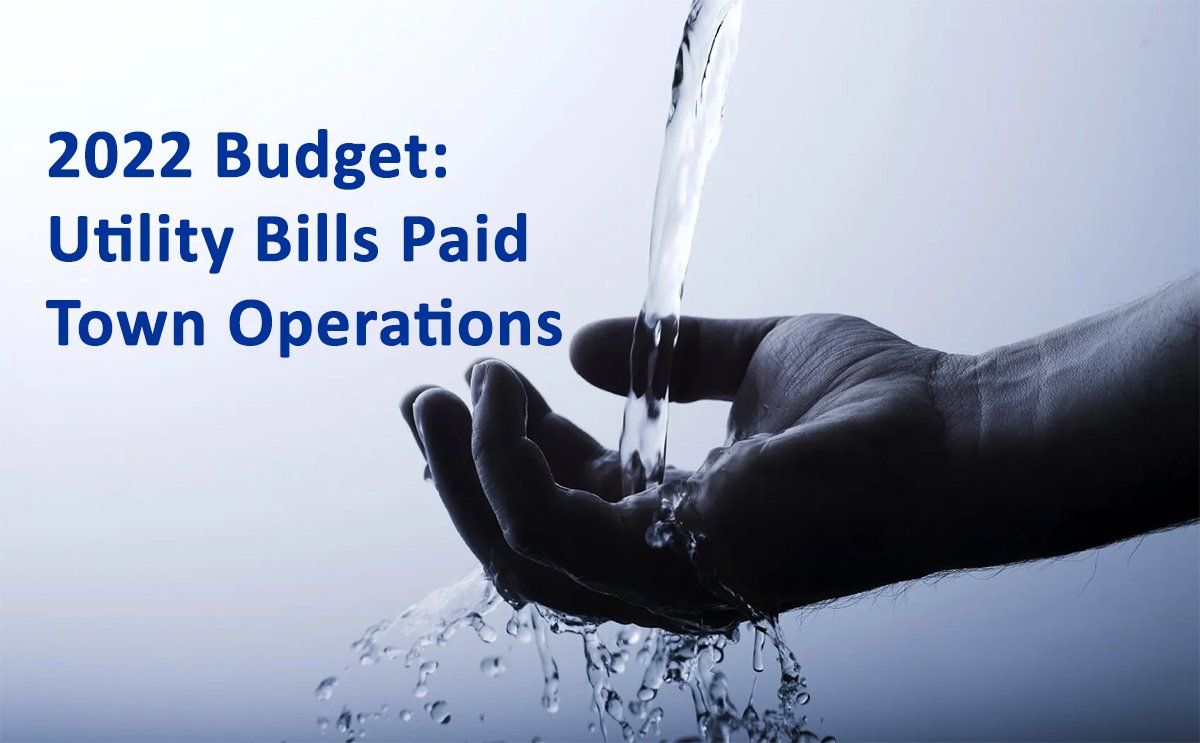
The General Fund is the primary operating fund for the Town. This single account is where all revenues and expenses are allocated relating to Town Administration, Legal, Legislative, Parks and Recreation, Public Works, Finance, Economic Development, Communications and Community Engagement, HR, IT, Public Safety, and Central Charges (ie. Debt and Transfers to other funds). The revenues that fund this account results from our sales taxes, property taxes, development related fees, recreation fees, landfill fees, oil and gas related income, and other miscellaneous sources. Adopted by the Board of Trustees in November, this year’s budget was prepared for the first time in over 10 years by someone other than our previous Finance Director. The 2022 General Fund Budget projects a total of approximately $42.6 million in revenues for the Town. This is an increase from approximately $36.1 million in 2021, for a year-over-year growth of $6.5 million or 18%. At first glance this might look great, but the Budget then continues to explain that this double-digit growth is largely just a result of an “accounting change.”

As we all practice social-distancing and isolation due to COVID-19, what happens when we run out of activities to do around the house? Below are many different items - ALL COMPLETELY FREE - including educational materials for children, books, music, and virtual activities, in order to continue learning or simply pass the time. Have more items to add to the list? Send me a message here or on Facebook . (I will continue adding to the list as additional suggestions come in - but remember, they must be FREE!) ACTIVITIES Fitness 1440 - Erie Virtual training for its members on their Facebook page, to help stay mentally and physically active (On-Demand FREE for current members, Facebook video classes also posted for current and non-members) (just a side note: you can still also purchase their smoothies, picking them up curbside from 10am-12pm, by texting or messaging your order to them!) https://www.facebook.com/fitness1440erieco/ Virtual Field Trips Take a virtual trip to locations arround the world: View exhibits from The Louvre Museum in Paris, the Anne Frank House in Amsterdam, explore the surface of Mars, and more http://freedomhomeschooling.com/virtual-field-trips/ Virtual Disney World Rides Even though the Disney parks are closed, you can still ride their rides virtually online https://www.wesh.com/article/virtual-disney-world-rides/31782946 Paris Musées Virtual Exhibit Collection of 150,000 digital art reproductions in High Definition of works in the City’s museums http://parismuseescollections.paris.fr/en GoNoodle Movement and mindfulness videos created by child development experts https://www.gonoodle.com/ CHILDREN'S EDUCATIONAL MATERIALS - GAMES, LEARNING, & VIDEOS Khan Academy Expert-created content and resources for every course and level (requires sign-up) https://www.khanacademy.org/ Newsela content from the world's most trusted providers and turn it into learning materials that are classroom-ready https://newsela.com/ XtraMath Program that helps students master addition, subtraction, multiplication, and division facts https://xtramath.org/ Teachers Pay Teachers Online marketplace for original educational resources with more than four million resources available for use (requires sign-up) https://www.teacherspayteachers.com/ Create Printables Variety of worksheets and printables ideas to personalize for your child https://www.createprintables.com/ PBS Kids Educational games and videos from Curious George, Wild Kratts and other PBS KIDS shows https://pbskids.org/ Sesame Street Play educational games, watch videos, and create art with Elmo, Cookie Monster, Abby Cadabby, Big Bird, and more of your favorite Sesame Street muppets https://www.sesamestreet.org/ Education.com A library of games, activities, educational worksheets, and lesson plans for PK-5th, curated by educators (requires sign-up) https://www.education.com/ BrainPOP Animated Educational Site for Kids - Science, Social Studies, English, Math, Arts & Music, Health, and Technology https://www.brainpop.com/ (Normally this is a paid subscription service, but they are offering free subscriptions due to the COVID-19 pandemic) Starfall Allowing children to have fun while they learn - specializing in reading, phonics & math - educational games, movies, books, songs, and more for children K-3 https://www.starfall.com/ BOOKS (KIDS AND ADULTS) Magic Blox Offers a large library of free online books & children's stories https://magicblox.com/ Epic! Digital library for kids offering unlimited access to 35000 of the best children's books of all time (30-day free trial available) https://www.getepic.com/ Open Library Collection of books from the Library of Congress, other libraries, and Amazon.com, as well as other contributors https://openlibrary.org/ Project Gutenberg Library of over 60,000 eBooks, including free epub and Kindle eBooks, download them or read them online https://www.gutenberg.org/ TV & MOVIES Tubi Stream and watch movies and TV shows online in HD on any device https://tubitv.com/ Pluto TV Watch 250+ channels of TV and 1000's of on-demand movies and TV shows https://pluto.tv/ MUSIC Spotify Digital music service that gives you access to millions of songs https://www.spotify.com/us/free/ Pandora Music streaming and automated music recommendation internet radio service https://www.pandora.com/ TuneIn Radio Internet radio, sports, music, news, talk and podcasts https://tunein.com/

Current and previous leaders have not addressed the items which they said they would. As a resident, I am tired of seeing Erie's potential squandered. That is why I am saying "no more!", and why I am running for Trustee. This is why I will focus on the most pertinent issues that I see, as well as the items that are most important to you, the Town's residents

